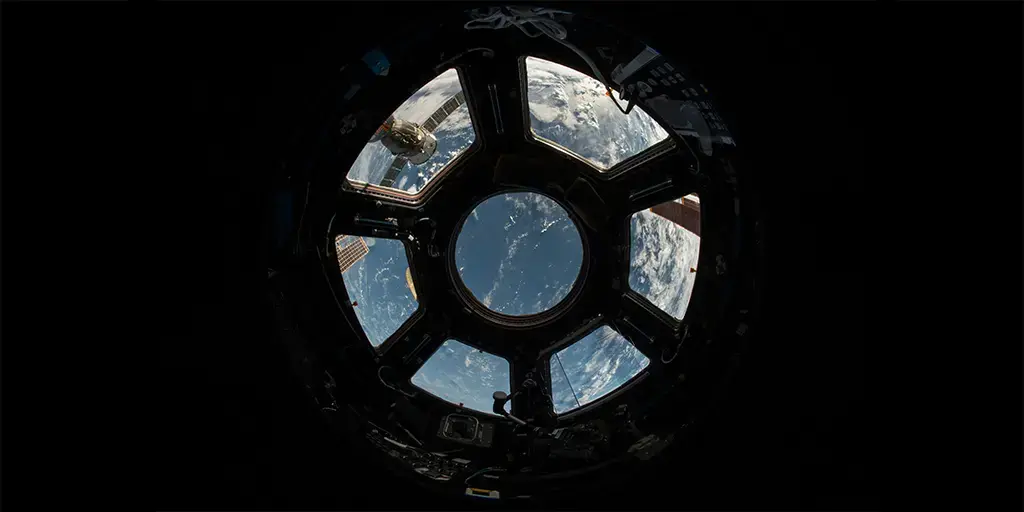(Excepted from our series “The New Scientific Evidence that Points to the Existence of God – Part 2.” Edited for publication. See our store at jashow.org to order this entire series.)
(Continued from Part 1)
Dr. John Ankerberg: All right. The fine-tuning parameters that Fred Hoyle discovered weren’t the only ones that physicists have discovered. Can you describe some other especially dramatic or precise examples of cosmic fine tuning?
Dr. Stephen Meyer: Sure. There’s a couple of different classes of fine-tuning evidence. One has to do with the strength of these fundamental forces: gravity, electromagnetism, the strong and weak nuclear forces. And all those forces must fall within very narrow ranges to allow, for example, the production of life-essential chemicals, or even very basic chemistry of any kind. And often, the ratios between those forces are critical as well
But in addition to that, there’s other types of fine tuning that relate to the initial conditions of the universe, the configuration of matter and energy at the very beginning. We live in a universe that’s fairly nicely ordered. We have these beautiful spiral galaxies, and inside the galaxies there are solar systems, and in our solar system we have everything arranged in just the right distances, and earth has the right axial tilt from the sun, and so forth, to allow for the possibility of life.
But getting even orderly galaxies depends upon a highly ordered set of initial conditions. You may remember that in the old days, if civil engineers were building a tunnel through a mountainside, their term of art was they would “configure a charge.” They would set up a dynamite charge, but they would put it at just the right angle, in just the right place, so the hole would be blown through the mountain in just the right way, so that they could put the road where they wanted it.
And in the same way, the arrangement of matter and energy had to be highly configured in a very specific way at the beginning of the universe to produce the highly ordered structures that we see today. The order that we have today is reflective of an even greater order at the beginning of the universe.
And there’s a great physicist from Britain, Sir Roger Penrose, who’s made calculations as to the degree of fine tuning that would have been required in the configuration of the initial conditions of the universe. It’s called the initial entropy fine tuning. And the number he’s derived has just blown people’s minds. That initial configuration of matter and energy is fine tuned to 1 part in 1010^123. It’s called a hyper-exponential number. So that’s a mind-blowing degree of precision.
Another fine-tuning parameter, and this is maybe a little bit easier to illustrate, is the fine tuning required to get the universe to expand at the right rate so that stable galaxies and planetary systems can form, and so that the universe doesn’t collapse back on itself on the one hand, or dissipate into a kind of cold heat death on the other. That’s known as the cosmological constant, which we’ve been discussing. And the fine tuning associated with the cosmological constant that we have in our universe, the force of outward push, is 1 part in 1090. That’s an accepted number among physicists.
And to put that in context, we could think about the fact that there are about 1080 elementary particles, electrons and protons and quarks and so forth, in our visible universe. So, getting the right degree of outward push for the cosmological constant would be equivalent to trying to find, blindfolded, floating in free space, one marked elementary particle out of all the particles in our universe. But we wouldn’t just have to be looking in our universe, but instead 10 billion universes our size for one marked elementary particle. That’s the degree of precision or, correspondingly, the improbability associated with getting the fine-tuning right for just that one parameter of the cosmological constant.
Dr. John Ankerberg: Yes, you’d have to do it quickly too.
Dr. Stephen Meyer: At the right time, at least. Yes.
Dr. John Ankerberg: Walk us through the logic of the design inference, and how it explains the evidence of cosmic fine tuning.
Dr. Stephen Meyer: Well, as Fred Hoyle has pointed out, he said that a “common sense interpretation” of the fine tuning suggests a super intellect; fine tuning suggests a fine tuner. There’s another great Cambridge physicist who had a late in life religious conversion and became an Anglican priest. His name was Sir John Polkinghorne.
And Polkinghorne had this wonderful visual illustration that he would use to get across the idea of fine tuning. He asked you to imagine that you were going out into space, and you would dock at a space station. And this happened to be the space station where the universe-creating machine resided.
And you would go into the control room, and there in the control room there would be all kinds of dials and knobs and sliders. And each one would be set to a very particular setting: strength of gravity had a very precise setting, and if you moved that one click this way or that way, then for different reasons, the universe would cease to be life-friendly. And with each of these parameters you had the same problem: one click this way or that way, and life would not be possible.
And Polkinghorne, when he gave lectures on this, would ask his audience, “What do you make of this?” I had the opportunity to interview him one time in Portland, and I said, “Well, Sir John, what do you make of it?” And in his very high Oxbridge accent, he said, “Well, I don’t say that the atheists are stupid. I just say that theism provides a more satisfying explanation.” And so, there’s something about fine tuning which intuitively suggests intelligent design.
I have a colleague, William Dembski, who’s developed a theory of design detection with a famous work published at Cambridge University Press, called The Design Inference. And what Dembski shows is that we detect design when two different things are present at the same time. One is improbability. And all the fine tuning parameters, it’s extremely improbable that we get those right randomly in the universe.
But Dembski says improbability alone is not enough. And he illustrates this with a great example. He asks you to imagine that you’re looking at the faces on Mount Rushmore. And immediately you think, “Oh, well, a sculptor was responsible for those faces.” And Dembski says, “Okay, but why?” And you say, “Well, it’d be very improbable for wind and erosion to make those faces.” And he says, “Yes, that’s right; this is a very improbable shape. But the pile of rocks at the bottom of the hill is also in an improbable configuration, and we don’t want to say that those are designed in exactly that configuration. So what else is present in the faces on the mountain?”
And he says the answer is what he calls a specification, a pattern that matches our experience, or performs a function. It has significance in some way that we can recognize from our independent experience. In the case of Mount Rushmore, that’s pretty obvious that it does that, because we recognize those faces from the independent experience of seeing the human face, and even the faces of presidents on a mountain.
Now, shift that example just a little bit. Imagine that you have a combination lock. And I used to do this little thought experiment with my students. I would pass a combination lock around in class. And I would pretend that what I was trying to prove was that the fine tuning was too improbable to happen by chance, and that that was the basis of my argument for design.
And so, I passed the combination lock around, and I’d have different students try to open the combination by chance alone; right, left, right. I’d even tell them, “Go right, left, right.” And they’d try and try again, and they failed. One student failed, next student failed, next student failed.
But finally, I’d get to about the fourth student, and the student would go right, left, right, and then pop the lock open. The students would all hoot and howl at me like they’d refuted my thought experiment because, look, it just happened by chance! And then I’d kind of sit there looking embarrassed—I’d feign embarrassment.
And then, finally, someone would almost always say, “Wait a minute, was he for real?” Because when you do the odds, and it’s 1 in 64,000 to get it right, and there’s only a few seconds to do it. And people would then say, “Was he a set up? Was that a plant?” And the students would start accusing, and I’d say, “Why would I do that?”
But then I’d walk over to the student and say, “Well, was that a setup job?” And he’d look kind of sheepish for a minute, and then he’d fish into his pocket, give the combination. And, of course, I had set it up. I’d given him the combination in advance.
And so, then I’d tell the students the real point of the gag, which is that you detected design; you started to suspect me of cheating because, not only did you witness a highly improbable event, but there was also a pattern match. There was a specification: that the combination, those three turns, matched the independent requirements for opening the lock, that we could specify on a piece of paper independently of the event. And so we had a small probability event that was also specified in a way to perform a function, to achieve something; in this case, open the lock.
And that’s what we have going on with the fine tuning. Small probabilities, plus specification, in our universal experience indicates design. And in the case of the fine tuning, what we have is a set of highly improbable parameters that are jointly necessary to achieve a very significant outcome, which is the production of life in the universe. So they perform a functional outcome.
And the conjunction of those two things triggers an awareness in the human mind of the action of another mind, of a designing intelligence. And that’s why so many physicists have said, as Paul Davies has said, great physicist, “the impression of design is overwhelming,” when he’s talking about the fine tuning.
Go Deeper
- Relying on The Constant Companionship of The Holy Spirit – Package Offer Video Download Full Series
- Inspiring Faith in Your Children and Grandchildren – Package Offer
- The Evidence for the Historical Jesus – Updated Edition





Leave a comment